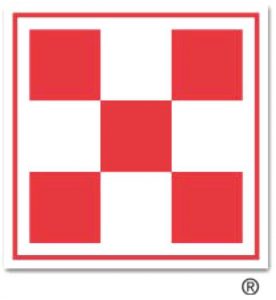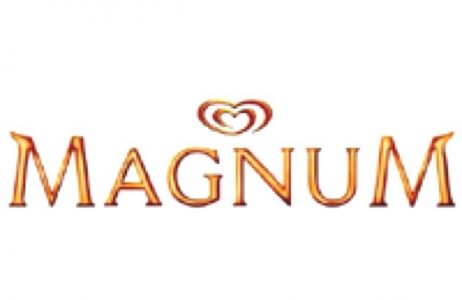Professional French Canadian Transcription Services
Spoken across Quebec and throughout Canada, French Canadian has a distinct vocabulary, pronunciation, and expressions that set it apart from European French. These linguistic differences are crucial in professional settings such as business, legal, healthcare, and media industries, where precise transcription ensures clarity and compliance. A standardised approach to transcription does not account for regional variations, making it essential to work with experts who understand the nuances of French Canadian language use.
At GoLocalise, we provide transcription services designed to meet the specific needs of businesses and professionals working in French Canadian markets. Our team of native French Canadian transcriptionists ensures that every transcript accurately reflects regional speech patterns, industry-specific terminology, and cultural expectations. Whether you need transcripts for corporate reports, legal documents, healthcare records, or media content, our services guarantee linguistic precision and industry relevance.
By choosing GoLocalise for your French Canadian transcription needs, you gain a partner dedicated to maintaining clarity, accuracy, and professionalism. Every document we produce reflects the authenticity of French Canadian speech, ensuring that your message is effectively conveyed to audiences across Quebec and other French-speaking regions of Canada. Our commitment to high-quality transcription allows businesses, legal professionals, and media organisations to communicate clearly and effectively in the French Canadian market.
We used GoLocalise to voice several of our films in Vietnamese. The service was friendly and professional. Being able to attend the recording sessions gave me confidence; the sound engineer had taken a lot of time to familiarise himself with our films and scripts, and the voice talents were incredibly competent and good at adapting to any changes in the scripts as we recorded. The whole process was incredibly smooth and I felt in safe hands.
Let's get started!
French Canadian Transcription Services Tailored to You
Every transcription project comes with its own set of requirements, which is why we offer a range of French Canadian transcription formats designed to meet different industry and content needs. Whether you require a highly detailed transcript for legal documentation or a concise summary for corporate briefings, our services adapt to your specific goals.
- Full verbatim transcription captures every spoken detail, including pauses, filler words, and hesitations. This format is essential for court hearings, academic research, and linguistic analysis, where every word and tone matters. By preserving all elements of speech, verbatim transcription ensures accuracy in records that require precise documentation.
- Edited transcription refines spoken content by removing repetitions, hesitations, and filler words while maintaining the original intent. This format is ideal for corporate documentation, training materials, and educational content, where readability and clarity are key for effective communication.
- Summarised transcription condenses lengthy discussions into structured, easy-to-digest key points. This is particularly useful for business briefings, news reports, and conference documentation, where a concise overview of discussions allows for quick decision-making and reference.
For projects requiring both languages, we also provide French Canadian and English transcription, ensuring seamless adaptation between Canada’s two official languages. This is particularly valuable for government reports, corporate meetings, and media production, where maintaining linguistic consistency and accuracy is essential.
What Do Our French Canadian Audio and Video Transcription Services Include?
A voice-to-text method that captures everything spoken, including interjections, signs of emotion (coughs, sighs, chuckles), false starts, and thought process shifts. It’s useful for reference during editing, but not ideal for finished, polished content.
This captures the speech exactly as it’s spoken, omitting filler words but without correcting grammar or sentence structure. It’s useful when accuracy is needed, but without polishing the final result.
Filler words, false starts, and mispronunciations are eliminated, with grammar corrected. This creates a refined document that reads more like proper text, ideal for publishing or any public-facing material.
Learn more about Transcription Services
Let's get started!
What Are the Benefits of Transcribing Your French Canadian Audio or Video Content with GoLocalise?
Take a podcast, for instance. By providing a text version of your audio content, search engines like Google can easily index and include it in their search results. When people search for keywords related to your subject matter, they’re far more likely to come across your material. This not only boosts your visibility but also significantly increases traffic to your site, expanding your reach and enhancing your online presence.
Journalists, bloggers, and other content creators often rely on quotes and citations to back up their arguments. When faced with two equally credible sources, one of which has already been transcribed, the transcribed version is much more likely to be chosen. Having your content available in written form makes it far easier for others to reference and quote, increasing the chances of your material being used in a variety of publications and discussions.
Creating high-quality audiovisual content, whether a podcast or a video, is both time-consuming and expensive. Why restrict it to just one format or platform? With a transcript, you can repurpose your content into a range of new formats, such as blog posts, social media updates, or short teaser clips that can attract new audiences. This process not only drives more traffic to your site but also ensures that your original content continues to serve a variety of purposes, maximising its value and impact.
One of the most important benefits of transcription is the increased accessibility it provides, particularly for people with hearing impairments. Without a written transcript, your audio or video content remains completely inaccessible to the deaf and hard-of-hearing communities. Providing a transcript ensures that everyone, regardless of their hearing ability, can engage with your content, helping to make your message more inclusive and far-reaching.
In the UK alone, there are approximately 550,000 Polish speakers, along with over a million speakers of languages such as Punjabi, Gujarati, Bengali, and Urdu. For many second-language speakers, especially when the content involves complex topics or colloquial expressions, following along with audio in a non-native language can be challenging. By providing a written transcript, you give these audiences a valuable resource to help them understand and engage with your content more effectively, bridging the gap between language barriers.
Creating your audiovisual content, whether that's a podcast or a video of some kind, is often an incredibly time-consuming and expensive process. So why use it for only one purpose? You can use a transcription to repurpose your materials into a blog or social media post, to drive traffic to your website, to use as a teaser to bring people to a full-length podcast, and many more uses too.
Sectors That Depend on French Canadian Transcription
rench Canadian transcription is vital for industries that require clear, structured, and regionally adapted documentation.
- Legal & Government – Transcription is crucial for legal cases, arbitration hearings, contracts, and government proceedings, ensuring compliance with Quebec’s legal frameworks.
- Healthcare & Medical Research – In Quebec’s healthcare system, transcription is necessary for patient records, medical studies, and clinical research, where precision is key.
- Media & Broadcasting – The demand for French-language content in Canada is growing, and transcription supports subtitles, film production, and interviews to make content more accessible.
- Business & Corporate – Companies operating in Quebec and other French-speaking regions rely on transcription for board meetings, internal communications, and financial reporting.
- Education & Research – Universities and research institutions require transcription for lectures, academic studies, and case studies, making knowledge more accessible.
By offering transcription that is tailored to the French Canadian market, GoLocalise ensures industry-specific accuracy and cultural adaptation.

Leave your project to the experts at GoLocalise so that you can relax and be assured of getting top-notch results
Every single detail will be analysed, studied and looked after so that you do not need to worry.
Some would say it’s not too classy to blow our own trumpet… but we just like to point out two very important details.
We have achieved ISO 9001 Quality Management certification in recognition of our consistent performance and high standards, and ISO 14001 Environmental Management because we care about our planet!
And if you are still curious and want to know more about us, why not have a look at our studio page.
Learn more about Transcription Services
Let's get started!
Why Native Expertise Matters in French Canadian Transcription
French Canadian differs significantly from European French, incorporating distinct grammar, pronunciation, and everyday expressions. Many automated transcription tools fail to recognise regional nuances, leading to errors that can change the meaning of the text.
For example, the common Quebecois phrase “C’est correc’” means “It’s fine”, but it does not exist in standard French. Similarly, the term “magasiner” (to shop) is widely used in Canada but rarely in France. Misinterpreting these expressions could create confusion in legal, corporate, or media contexts.
At GoLocalise, our native French Canadian transcriptionists ensure that every transcript reflects regional language preferences and industry-specific terminology, maintaining authenticity and professionalism.


Efficient and Reliable French Canadian Transcription Process
Our French Canadian transcription workflow guarantees precision, efficiency, and confidentiality from start to finish:
- Encrypted File Upload – Clients submit their recordings securely, ensuring data protection and confidentiality.
- Expert Transcriptionists – Our French Canadian linguists transcribe with attention to regional expressions and terminology.
- Editing & Proofreading – Each transcript is reviewed to guarantee correct spelling, grammar, and industry accuracy.
- Client Review & Adjustments – We fine-tune transcripts to meet your preferred terminology and formatting.
- Final Delivery in Your Chosen Format – Receive transcriptions that are ready for corporate, legal, medical, or media use.
For high-volume transcription projects, such as conferences, media productions, and government archives, we offer scalable solutions that maintain accuracy and fast turnaround times.
Why Partner with GoLocalise for French Canadian Transcription?
When you choose GoLocalise, you’re working with a team that understands the linguistic, cultural, and industry-specific demands of French Canadian transcription.
- Native French Canadian Specialists – Our transcriptionists are fluent in Quebec French, ensuring linguistic accuracy and natural phrasing.
- Industry-Specific Adaptation – We customise transcriptions for law, media, healthcare, business, and academic research, ensuring correct terminology.
- Flexible Transcription Solutions – Whether you need detailed verbatim transcriptions, business summaries, or bilingual reports, we adapt to your needs.
- Reliable & Scalable Services – From small projects to large-scale transcription needs, we deliver on time and with consistent quality.
Let us help you turn spoken French Canadian into professional, structured text. Contact us today to discuss your transcription needs and discover how GoLocalise can support your business, media, or legal projects.

What our happy customers say
Nicola
English UK Voice Over Talent
Stefanie Smith
Producer at Education First

Thomas Kennedy
Designer at Atlas Knowledge

Jo Samuel
Animator at Pixel Circus

Philippa Strandberg-Long
Deputy Course Leader - Acting, Italia Conti
Jonathan Lapps
Account Manager at Epipheo

Price Match Promise
Challenge Our Prices, Enjoy Our Quality















